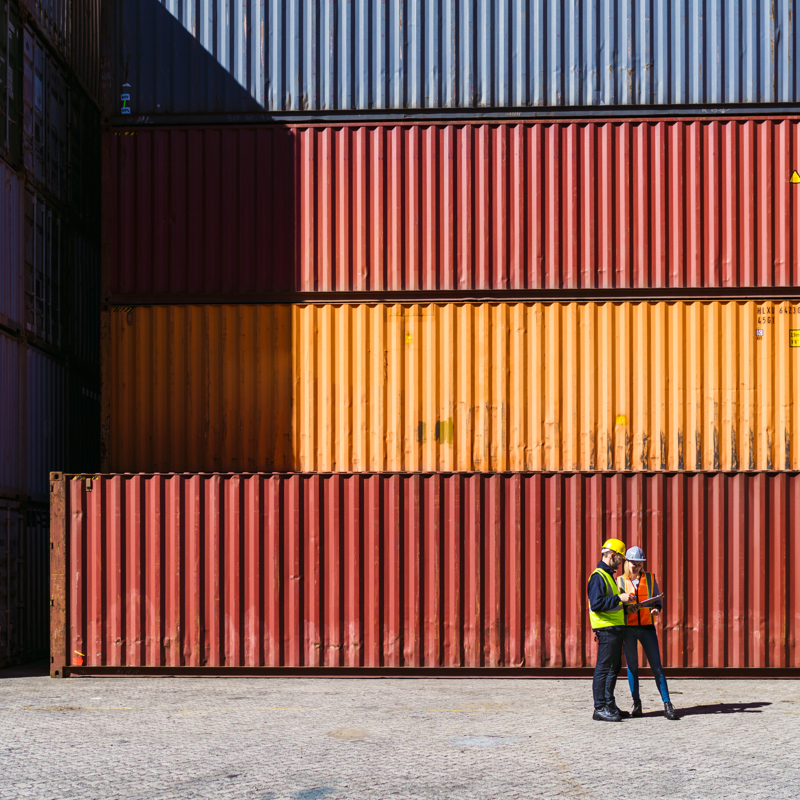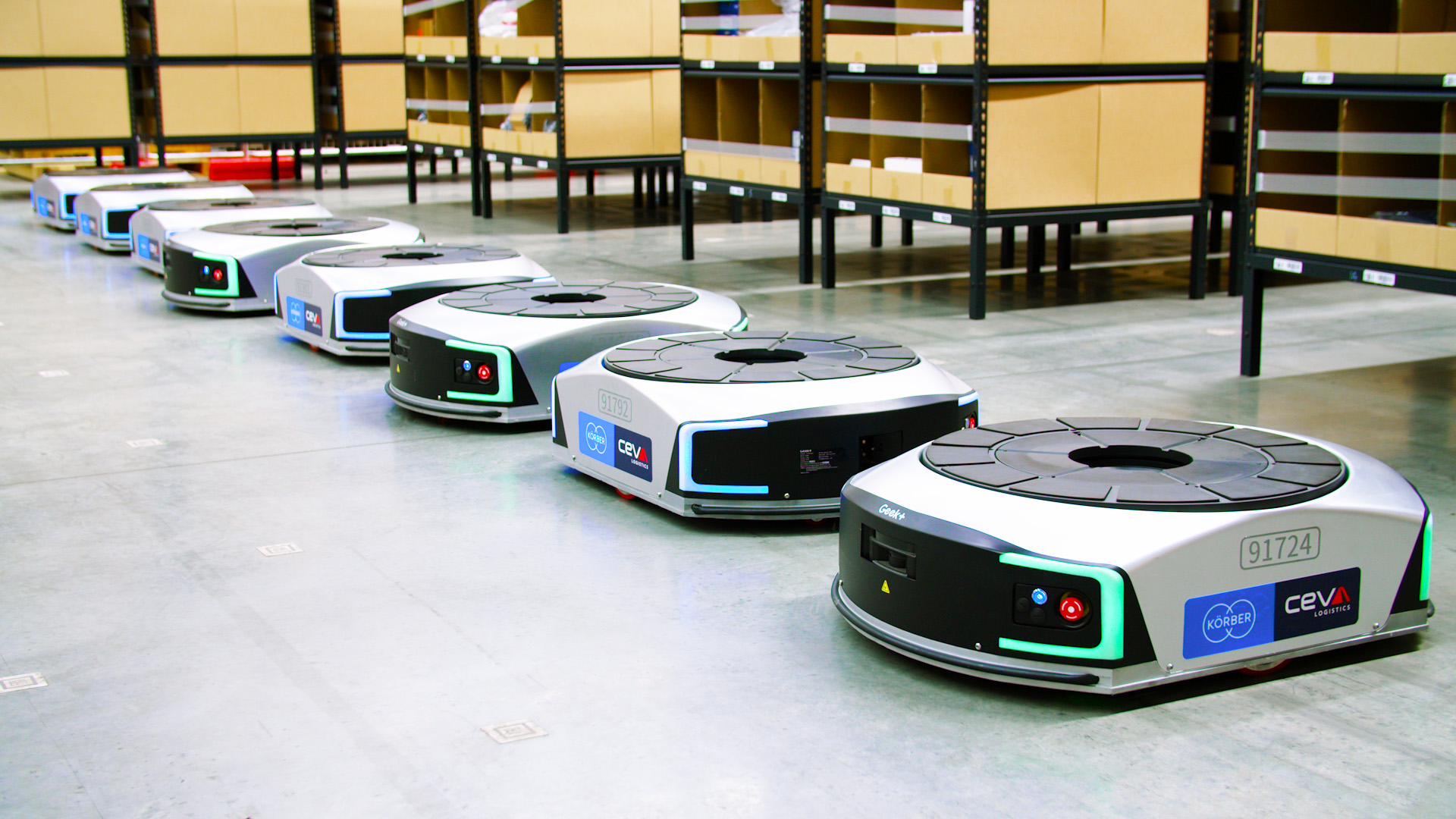
- Blog
How supply chains are re-defining resilience through smarter network design
A recap of the Roland Berger × Infios webinar on building...
In the fast-paced world of warehousing and distribution, staying ahead of the competition requires innovative solutions. As businesses strive to meet the ever-increasing demands of customers, technology is playing a pivotal role in optimizing warehouse facility processes.

In the fast-paced warehousing and distribution industry, businesses aiming to stay ahead of the competition and maintain facility optimization require innovative technology solutions. Technology is playing a pivotal role in optimizing processes, reducing order cycles and boosting productivity.
With tasks such as picking, sorting, loading and unloading packages being automated more and more with the help of robotics, the future of warehouse logistics could bring a lot more automation into operations. However, adding AMR and other warehouse technologies may present other challenges and increase complexity. Different automation systems often require separate integrations, a problem that is further complicated by the inability to manage the employed solutions under one system. This results in siloed processes, suboptimal performance and a lack of visibility into order fulfillment processes and operational KPIs, across all systems.
The key to the supply chain warehouses and fulfillment centers of tomorrow could be an emerging technology known as multi-agent orchestration.
One of the most promising advancements in this field is the orchestration of hybrid robot fleets and the surrounding manual workflows within the warehouse environment under one system. This groundbreaking approach is reshaping the way warehouses operate, delivering tangible benefits such as optimized processes, reduced order cycles, increased productivity and enhanced throughput.
Warehouses have seen a surge in automation and robotics in recent years, with Autonomous Mobile Robots (AMRs) at the forefront of this transformation. However, simply deploying AMRs isn't enough to unlock their full potential. To maximize efficiency and ROI, warehouses are turning to orchestration systems that involve coordinating AMR-driven and human workflows to work seamlessly together.
Multi-robot and people orchestration redefines the concept of teamwork in warehouses. This synergy optimizes processes such as order picking, item replenishment and inventory management.
These warehouse orchestrators should be able to leverage order and inventory information from the Warehouse Management System (WMS) and use it to allocate tasks to staff and automation technologies, based on their suitability and workload.
By assigning tasks to the most suitable robots or humans based on their proximity and availability, warehouses can achieve greater efficiency. The orchestration system ensures that each task is completed by the most appropriate resource, reducing idle time and minimizing errors. The result is a significant increase in efficiency and a balanced material flow.
In today's "I want it now" consumer culture, reducing order cycle times is paramount. Multi-robot and people orchestration may be the solution. By managing and coordinating fulfillment processes, from replenishment to picking to transporting bins to packing stations, the time it takes to complete customer orders is drastically reduced. This agility ensures that orders are processed, packed and shipped with remarkable speed and accuracy.
The key to improving productivity lies in utilizing the strengths of both robots and humans. AMRs excel in repetitive, physically demanding tasks, while humans possess decision-making abilities and can adapt to changing situations. By combining these strengths, warehouses can significantly boost productivity.
Orchestrating AMR fleets and the supporting technologies, for example voice-directed work solutions and light-assisted pick walls, allows warehouses to scale operations effortlessly. As order volumes increase, additional robots can be deployed, while the orchestration system ensures they seamlessly integrate into the existing workforce. This flexibility is invaluable in meeting the demands of peak seasons and sudden spikes in orders.
Safety is also a top priority in any warehouse environment. AMR systems are designed with safety in mind. Advanced sensors and collision avoidance mechanisms ensure that robots work harmoniously alongside humans without posing any risk.
Additionally, by automating physically strenuous and repetitive tasks, these systems help reduce the strain on human workers. For example, deploying goods-to-person AMRs significantly reduces walking distances, as workers don’t have to retrieve items on foot anymore. These and other benefits not only enhance overall job satisfaction but also help attract and retain talent in a tight labor market.
As technology continues to advance, warehouses that embrace multi-robot and people orchestration are future-proofing their operations. This flexible, scalable and efficient approach ensures that your warehouse can adapt to changing market dynamics, emerging technologies and evolving customer expectations.
In conclusion, warehouse orchestration systems represent a revolutionary shift in warehouse management. By harnessing the collective power of robots and humans, businesses can optimize processes, reduce order cycles, increase productivity, and enhance throughput. As warehouses continue to evolve, those that embrace this transformative approach will thrive in the competitive landscape of modern commerce.
